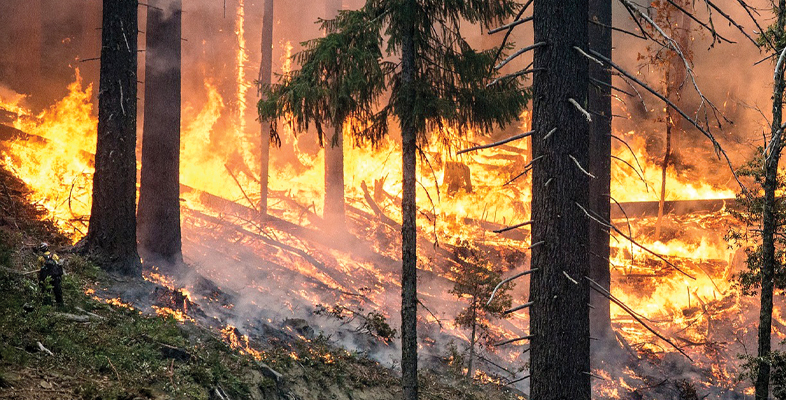1.2 Fire dependant ecosystems
Using dynamic global vegetation models, ecologists have compared the present global vegetation distribution which is subjected to fire with the potential vegetation distribution in the absence of fire. They estimated that if fire were ‘switched off’ dense tree cover would increase from 27% to 56% of the vegetated earth surface and more than half (52%) of tropical savannahs would become tropical angiosperm-dominated forests. This suggests that the presence of savannah and grasslands in climates wet enough to support forests is due largely to fire.
For the past few thousand years, fires have been started deliberately by humans. However, well before the emergence of humans, earth fires were started naturally by lightning, and the close association between fires and the emergence of plants suggests that fires played a key role in the origins of adaptive morphological characters of many plants that evolved in fire-prone areas. There are now many species and whole communities of plants that cannot persist unless fires occur with a certain minimum frequency. One example of such a community is the Fynbos (meaning ‘fine bush’ in Afrikaans) of South Africa – a natural shrubland/heathland vegetation occurring mainly in the winter rainfall Mediterranean climate areas of the Western Cape, South Africa.
Activity 2 Fynbos on fire
Watch Video 3, which describes the effect of fire on the Fynbos in the Cape region of South Africa.

Transcript: Video 3 Fynbos on fire.
NARRATOR: Life on the Cape has been blessed with a unique mix of circumstance, isolation, solid foundations, and a stable, nurturing climate. But there’s a twist in this tale. Come the end of winter, the Cape undergoes a dramatic change. The cool, moist winds subside. The air becomes tinder dry.
Every 15 years or so, the mountains erupt in flames. Summer fires are ignited by sparks from rockfalls, by lightning or controlled burn. It looks fearfully destructive, but fire is actually essential to the health of the Fynbos. Fire clears away old vegetation, releasing important minerals to the soil. For proteas, the intense heat and smoke are also crucial catalysts for the next generation. Within hours of the fire passing, millions of seeds are released to the wind to await the next winter rains.
The commentator mentions that fire is important in maintaining the health of Fynbos for two reasons. What are these?
Answer
Fire releases important minerals into the soil.
Fire is important for the release of seeds.
Communities such as Fynbos are known as fire climax communities and are typical of areas with a Mediterranean climate (hot, dry summers and warm, wet winters). However, in virtually all regions with a definite dry season, fire has become an essential part of cyclic change in ecosystems. It is now clear that in order to sustainably manage ecosystems both for conservation and timber production it is necessary to understand both the ecological role of fire and a central aspect of fire ecology, which is the concept of a fire regime.
